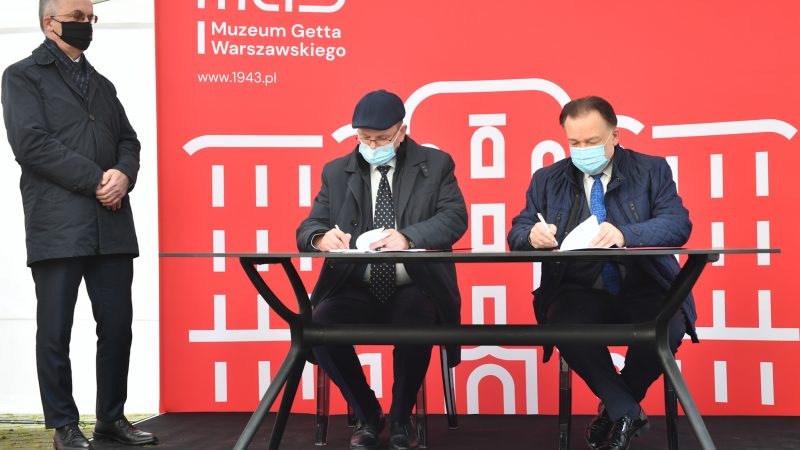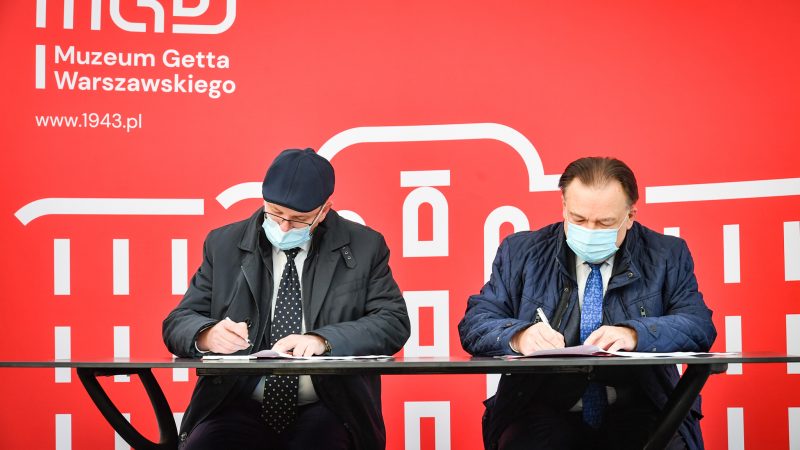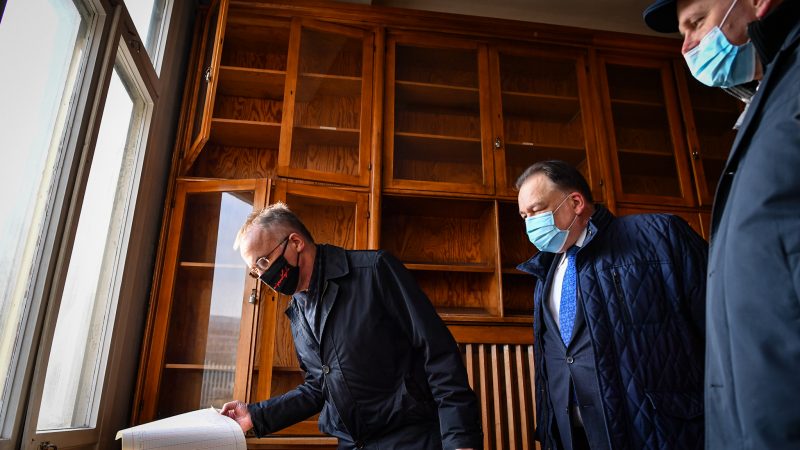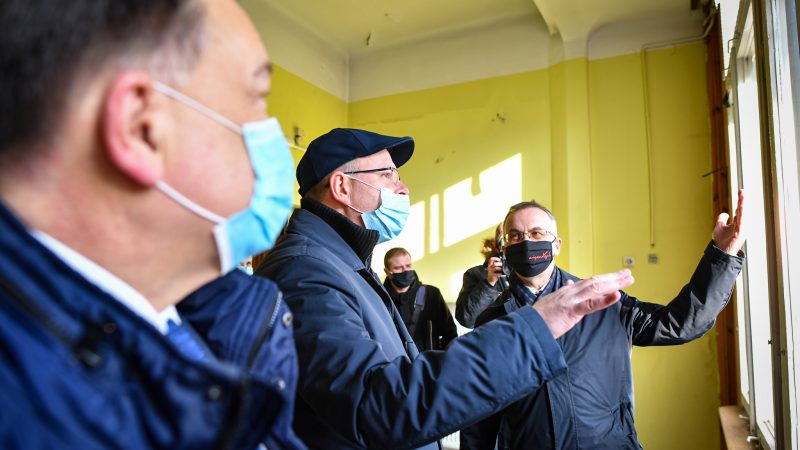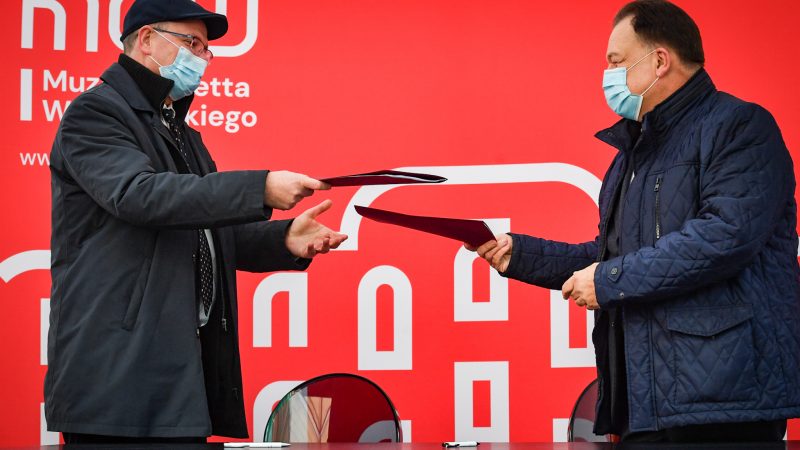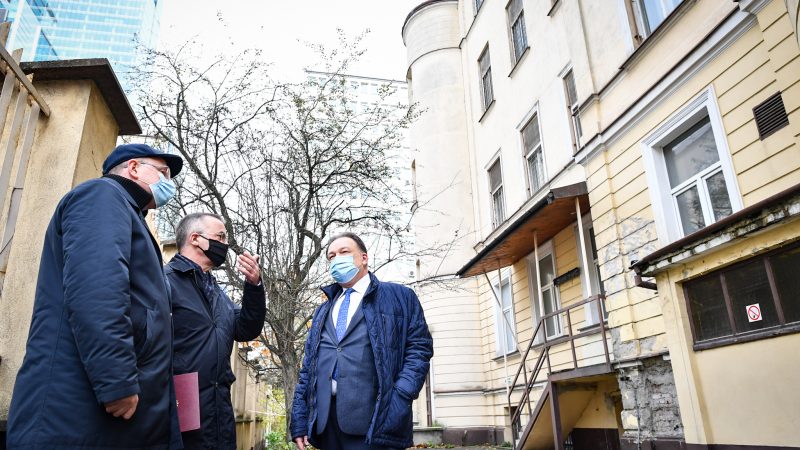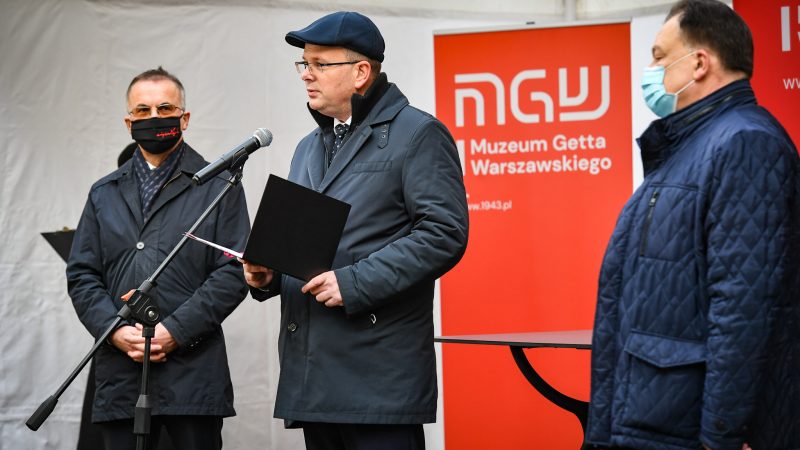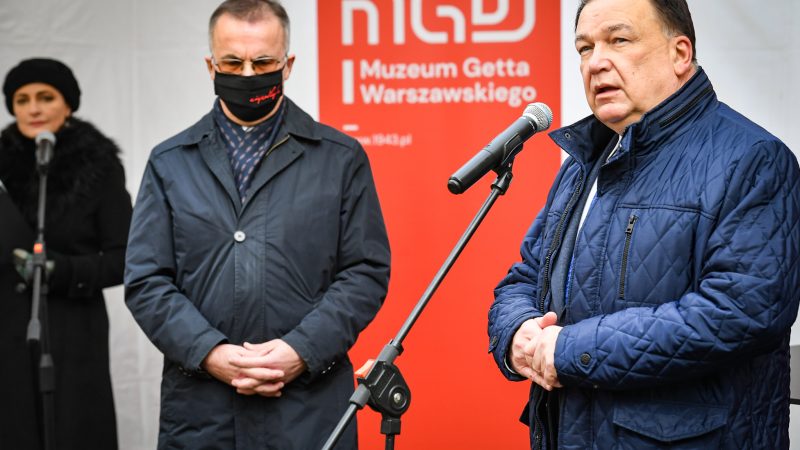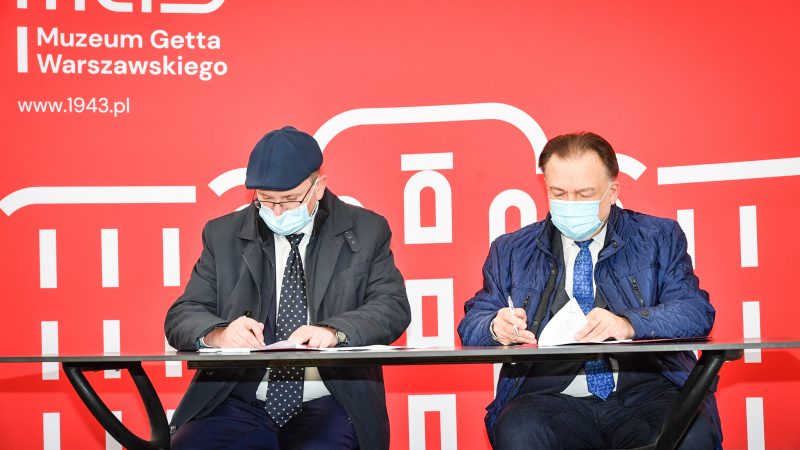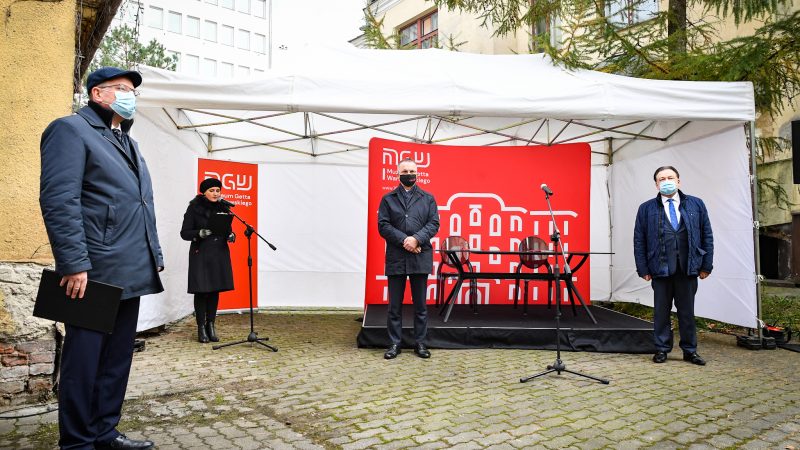Building of the former Bersohn and Bauman Children`s Hospital at Sienna St. in the possession of the WGM
The Warsaw Ghetto Museum has become the new owner of the building that accommodated the former Bersohn and Bauman Children’s Hospital. Marshal Adam Struzik and Director of the Museum Albert Stankowski signed an agreement to purchase the property
16 November 2020
The aim of the Warsaw Ghetto Museum is to spread the knowledge about the history of the Warsaw Ghetto and other enclosed districts established by the Germans throughout Poland during World War II. As Marshal Adam Struzik points out, the creation of the Warsaw Ghetto Museum in the building at Sienna Street is a crowning achievement commemorating the history of this place. “The building is handed over to the Warsaw Ghetto Museum during a symbolic time, on the 80th anniversary of the closure of the Warsaw Ghetto borders. I am convinced that the museum will serve as a reminder of the fate of the Jewish people and inhabitants of Warsaw and a warning against hatred“, adds the Marshal.
The Warsaw Ghetto Museum was established in March 2018. “The idea of placing the permanent exhibition in the Bersohn and Bauman Children’s Hospital has accompanied us from the very beginning. This building is a unique witness to the history of Warsaw Jews. We commemorate and save the monument“, says Albert Stankowski and recalls that the hospital, founded in the second half of the 19th century by the Jewish philanthropists, Bersohn and Bauman families, was located in the Warsaw Ghetto during the occupation. In unimaginable conditions, faced with a shortage of food and medicines, the hospital staff tried to save patients’ lives. The hunger disease study was carried out here, and after the end of the war, when the building housed the seat of the Central Committee of Jews, documents that survived from the Ringelblum Archive were analysed in the building.
The Warsaw Ghetto Museum is an institution in organisation. The main task of the team is to develop a permanent exhibition. The Museum also carries out educational activities, offering workshops for teachers and guides, and lessons for students. The activities dedicated to the remembrance include the organisation of anniversary events, i.a. the anniversary of the beginning of the Grossaktion, the outbreak of the ghetto uprising and the closing of the ghetto borders. The Museum also encourages the guests to visit the open-air exhibitions.
In October 2020, the Warsaw Ghetto Museum announced a tender for the “Development of project documentation for an investment project called “Construction of the Warsaw Ghetto Museum“, along with the design of a permanent exhibition and obtaining the required arrangements and administrative decisions, as well as design supervision.” The Warsaw Ghetto Museum has also been working on building the collection and obtaining artefacts intended for display at the permanent exhibition. In November, the Institute of National Remembrance handed over the original copy of the Stroop Report for deposit with our institution. This is how the campaign “We Collect, Build, Remember” was launched.
History of the building of the former Bersohn and Bauman Children’s Hospital
The hospital was founded by the initiative of the Bersohn and Bauman families. The fund to set up the hospital was established in 1872 in the last will of Majer Bersohn, the family senior. Then, the sons of Majer – Mathias and Jan – and his daughter Paulina with her husband Solomon Bauman became involved in the foundation’s work. The hospital building was erected in the period of 1876-1878, according to Artur Goebel’s design. Although it was created to treat children of the Jewish faith, from the very beginning medical help was provided to all children, regardless of their religion. On the initiative of the Dawidson family, an ophthalmologist pavilion was also built here in 1899 (the building at 60 Sienna Street). During World War I, Justyna Bershon organised a field hospital in that building. At that time, the main building had 143 beds and served as an infectious disease ward. After the war, the hospital was closed due to financial problems. The reopening of the facility was possible thanks to the involvement of Dr Anna Braude-Heler, Children’s Friend Society and the Jewish Community. In 1924-1930, the main building was extended according to the design of Henryk Stifelman. Moreover, in the years 1928-1935, a boarding school for Children’s Nurses operated in the hospital.
At the outbreak of World War II, the facility was incorporated into the structures of the Warsaw hospitals. Fortunately, the hospital avoided fire, and by November 1940 it was located in the southern part of the Warsaw Ghetto. The fight against hunger and typhus epidemic required extraordinary sacrifice and commitment of the hospital staff. In October 1941, a hospital branch was opened in the school at 80 Leszno Street. The activity of the Bersohn and Bauman Children’s Hospital in its original seat ceased on 10 August 1942 with the closure of the small ghetto. During that time, after the hospital was moved to the branch, the buildings at the streets of Sienna and Śliska accommodated the Institute of Children’s Hygiene, and in August 1944, the injured insurgents of the Chrobry II Home Army Group were helped there.
During the war, almost 60 percent of the hospital buildings got destroyed. In 1946, the property was returned in the hands of the Bersohn and Bauman Foundation, and the Central Committee of Polish Jews was given the right to use the hospital properties.
In 1952, the ownership of the property was transferred to the city, and the facilities were again used for medical purposes with the opening of the Hospital for Infectious Diseases, which operated there for the following 60 years. In 1999, by law, the local self-government came into the ownership of the property. Until 2014, the Children of Warsaw Provincial Hospital for Infectious Diseases – Independent Public Health Care Institution in Warsaw – was operating there. The technical condition of the monument did not enable its further use in a similar way.
Miłka Skalska, Press Officer and Head of the MGW Communication Department
Photo by Jacek Turczyk


